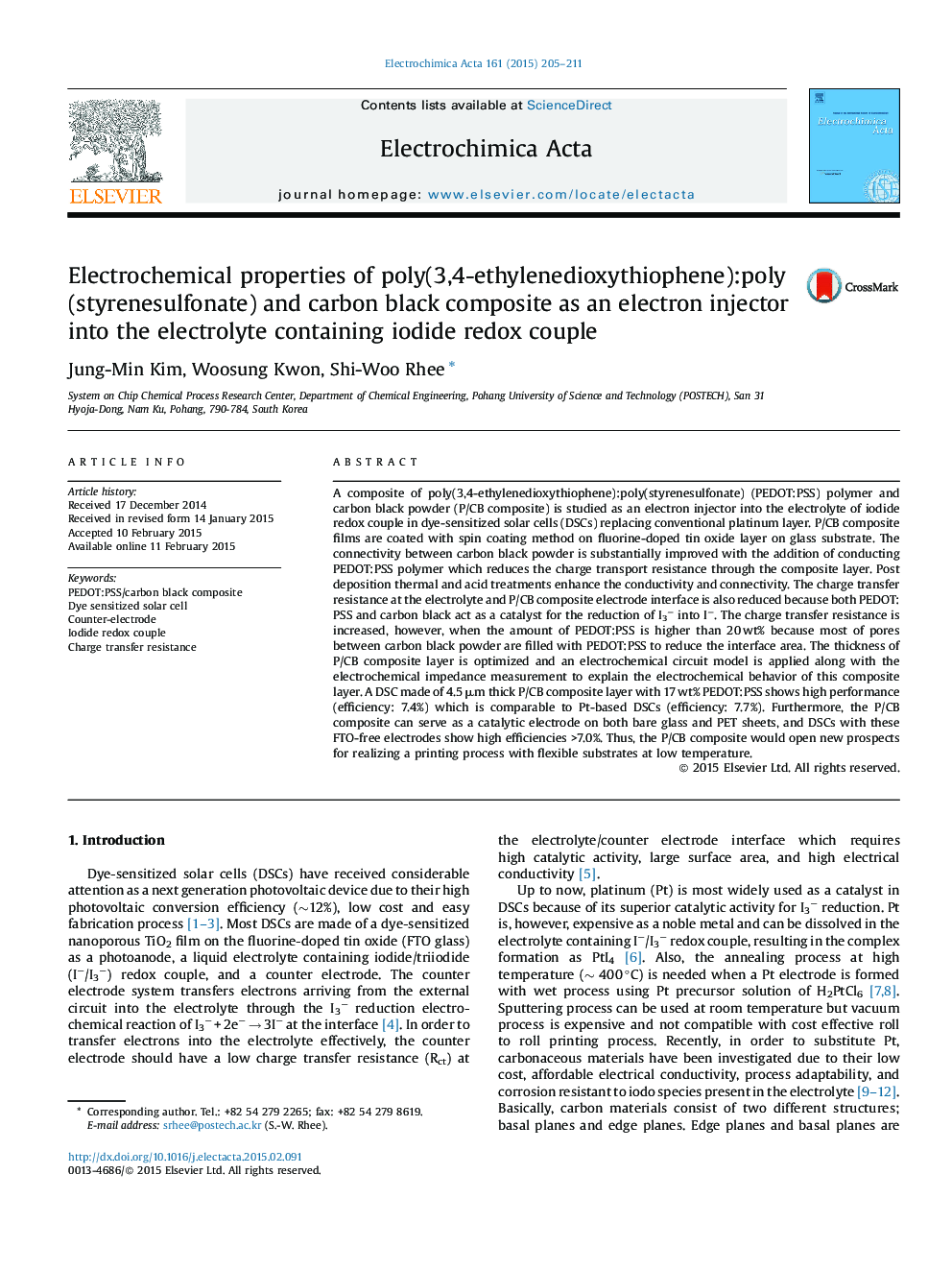| کد مقاله | کد نشریه | سال انتشار | مقاله انگلیسی | نسخه تمام متن |
|---|---|---|---|---|
| 184175 | 459570 | 2015 | 7 صفحه PDF | دانلود رایگان |
A composite of poly(3,4-ethylenedioxythiophene):poly(styrenesulfonate) (PEDOT:PSS) polymer and carbon black powder (P/CB composite) is studied as an electron injector into the electrolyte of iodide redox couple in dye-sensitized solar cells (DSCs) replacing conventional platinum layer. P/CB composite films are coated with spin coating method on fluorine-doped tin oxide layer on glass substrate. The connectivity between carbon black powder is substantially improved with the addition of conducting PEDOT:PSS polymer which reduces the charge transport resistance through the composite layer. Post deposition thermal and acid treatments enhance the conductivity and connectivity. The charge transfer resistance at the electrolyte and P/CB composite electrode interface is also reduced because both PEDOT:PSS and carbon black act as a catalyst for the reduction of I3− into I−. The charge transfer resistance is increased, however, when the amount of PEDOT:PSS is higher than 20 wt% because most of pores between carbon black powder are filled with PEDOT:PSS to reduce the interface area. The thickness of P/CB composite layer is optimized and an electrochemical circuit model is applied along with the electrochemical impedance measurement to explain the electrochemical behavior of this composite layer. A DSC made of 4.5 μm thick P/CB composite layer with 17 wt% PEDOT:PSS shows high performance (efficiency: 7.4%) which is comparable to Pt-based DSCs (efficiency: 7.7%). Furthermore, the P/CB composite can serve as a catalytic electrode on both bare glass and PET sheets, and DSCs with these FTO-free electrodes show high efficiencies >7.0%. Thus, the P/CB composite would open new prospects for realizing a printing process with flexible substrates at low temperature.
Journal: Electrochimica Acta - Volume 161, 10 April 2015, Pages 205–211
